Estimated reading time is 23 minutes.
AS A SYMBOL OF POTENCY, by 1968 Elvis Presley was perceived by many as being, um, flaccid. His records had lost any semblance of allegiance to—or even recognition of—the passion and fervor of its country and blues roots. The soundtrack music he had been recording for the requisite three movies per year owed more to “How Much Is That Doggie In The Window” than to Big Boy Crudup or Hank Williams.
He was at a professional and personal crossroads: any single decision could have undone his career, perhaps even jepoardized the legacy of his earlier accomplishments. It was do-or-die time and the man needed a put-up-or-shut-up challenge
Few fans today know the many downs and the occasional ups of having actually been an Elvis fan in 1968, especially if you were one of the few still buying each new so-so record and tickets for each new dreadful movie as they came out. It was a confusing and a fairly lonely experience.
You had to have been there.
Then.
And frankly, there were few real fans left by the start of ’68.
Elvis in 1967 was leaner but still that overindulgent softness in his face (dismissed as poor eating habits but more likely poorer drug habits) and the bouffant-ish hairdo that was so out of place at the time. Except, of course, with hairdressers.
A solitary pleasure
The unexpected demand for his records in the wake of his death and the huge influx of collectors since then would lead many to believe that they were there all along. 1
They were not.
Going to a movie theater to see an Elvis movie during the second half of the ’60s was usually a solitary pleasure.
Supporting the Elvis Movie Machine was a kind of guilty pleasure. 2
Most hip critics did NOT live through this era, so do NOT have the actual experience of going through the changes of habit that these records and these films entailed.
Second-generation Elvis fans of the ’60s saw the ’50s movies at Saturday matinees and bought all the old 45s for a nickel apiece at junk shops and yard sales.
And most diehard fans who grew up with Elvis in the ’50s abandoned him in the early ’60s and didn’t rediscover their love for him until August 16, 1977.
But that’s not me: I’m a second-generation Elvis fan who came of age watching Loving You and Jailhouse Rock and G.I. Blues and Girls! Girls! Girls! at Saturday matinees.
Who bought the ’50s 45s for a nickel apiece at junk shops.
I am also of the generation of Elvis fans who paid their allowance or after-school job money for tickets to the movies where there was everything but the plot, directing, and acting and the soundtrack albums that preceded them.
This is easily one of the busiest, most colorful posters for any Elvis movie! I’d like to say something about the colors here, but this is a photo of a poster uploaded onto the internet. It may be somewhat inaccurate in terms of color representation. So I won’t except to say that Elvis looks like he’s made of Hershey’s chocolate! (More on Stay Away, Joe below.)
Your time hasn’t come yet, baby
For Elvis, the ’60s can be broken up into three major sections: the First Comeback, the Hollywood Years, and the Second Comeback. The First Comeback is as short as one year (1960) but could be extended to 1962. After that, songs that should have been rejected as soundtrack fodder found their way into his normal studio sessions and everything went downhill fast.
The Hollywood Years began in earnest in 1961 when Elvis made three movies that produced two soundtrack EP albums and one LP album. His devotion to his studio work slackened off considerably in quantity and quality. One lackluster movie followed another into 1969, often with a script so brain-dead that Brando or Nicholson couldn’t have saved it.
The Second Comeback had its roots in May 1966, when Elvis was contractually forced to record some new non-soundtrack singles and a new gospel album. RCA’s man-in-Nashville Chet Atkins assigned Felton Jarvis to be Elvis’s full-time A&R man; their first sessions together produced some of Presley’s best work in a while.
This included a Top 20 single, Love Letters, one of his best albums ever, HOW GREAT THOU ART. He also waxed one of his most transcendent recordings ever, Tomorrow Is A Long Time. Bob Dylan would later claim this as his favorite reading of one of his songs by another artist.
First-generation Elvis fans of the ’50s didn’t have to do the clam with Queenie Wahine, or get into double trouble with a kissin’ cousin while slicin’ sand at a bloody clambake!
Whatever opinion one may have of Felton, things began happening when he entered the scene: those ’66 sessions, the Jerry Reed sessions of ’67, and the ’68 comeback all happened in the first twenty-four months of Felton’s taking over the A&R position
Coincidence?
Only if you believe in such things.
But the comeback began in earnest in June 1968, when Elvis began work on his first (and only, really) television special. But we fans weren’t fully privy to that comeback until December 3, 1968, when NBC broadcast that special.
So the list below is broken up into two sections: “Your time hasn’t come yet, baby,” in which Elvis transitions out of the Hollywood Years, and “Just let yourself go,” in which Elvis does! (Let himself go, finally.)
Or did . . .
If you had been a good girl or boy throughout 1967, you received one of the above albums for a psychedelic Christmas: the Beatles’ MAGICAL MYSTERY TOUR, Donovan’s A GIFT FROM A FLOWER TO A GARDEN, the Jimi Hendrix Experience’s AXIS: BOLD AS LOVE, Jefferson Airplane’s AFTER BATHING AT BAXTER’S. and the Rolling Stones’ THEIR SATANIC MAJESTIES REQUEST. Four of these albums had gatefold jackets that opened into colorful packages!
Where we left off with Elvis in 1967
Had Elvis left the previous year in good form or not? His previous single had been Big Boss Man, a fine stomping blues number that was light years beyond Frankie And Johnny and Spinout and (cringe) Long Legged Girl (With The Shirt Skirt On).
But by the end of ’67, everything was about your favorite artist’s latest album, and Presley gave the world of rock & roll Clambake, the incredibly lame soundtrack album to the even lamer movie of the same name!
What a mishmash that album was! Seven songs recorded in February 1967 for the movie, plus five songs recorded in September as possible singles. The movie songs included four of the most dreadful recordings of Presley’s career: Clambake, Hey Hey Hey, Who Needs Money, and Confidence. 3
Got that: one-third of the album was sub-par dreck even by Presley’s ever-diminishing standards!
At a time when albums were getting better, stronger, and more consistent, Elvis albums were getting worse!!
To further mess with the heads of we fans, RCA included two of the strongest sides that Elvis had cut in years, Big Boss Man and Guitar Man!!!
In was an inauspicious way to end a year full of amazing developments in rock music.
If you had been a good girl or boy throughout 1967 but were an Elvis fan, Santa may have thought he was doing you a favor by leaving you this instead of one of the aforementioned psychedelic gems. Of course, what we fans didn’t know then was that Elvis was secretly pushing the ingestion of the ultra-rare psychedelic clam Tridacna mbalavuana lysergicaa. Slurp down a couple of these babies raw and you’ll be cutting loose and letting go because who needs the worry and the strife?
Month-by-month with Elvis
Below the reader will find a month-by-month account of the events of 1968 that were easily known by an Elvis fan then. Needless to say, the list focuses on the records and the movies released that year.
Mini-reviews of each were included when I could find them easily, often from Lee Cotten. Sales figures for the records came from two sources, Ernst Jørgensen and Marc Hendricks. (Images for the books can be found at the bottom of this page.)
January
Guitar Man / Hi Heel Sneakers
Billboard: #43 / #__
Cash Box: #39 / #69
Single: RCA Victor kicked off the new year with a smart move (for a change): they pulled the standout track from the CLAMBAKE album and issued it as the new Elvis single. Supposedly, RCA tampered with Elvis’s mix of Guitar Man, moving Presley’s voice up to the fore. Elvis complained but the single was issued with the RCA mix.
Reviews: Billboard featured both sides and said of Guitar Man that “this infectious rock number could easily prove one of his top sellers in some time.”
Sales: Hopes were high for this record, but according to Jørgensen it was met with “disappointing sales of less than 300,000” copies in the US.
According to Hendrickx, Guitar Man eventually sold 400,000 in the US. It also sold 100,000 in the UK and passed 1,000,000 globally. 4
Personal experience: I was 16-years old when Guitar Man appeared as AM-590 WARM’s Pick Hit of the Week. I was starting to pay more attention to girls (and they to me) and politics than homework and baseball. (Although Marvel superhero comics remained the love of my life.)
While it would be great to say, What a great new single!, that praise was hampered by the fact that the track had already been released on the CLAMBAKE album. Technically it was recycled and saying, What a great reissue as a new single! didn’t carry as much weight. 5
February
Elvis’ Gold Records, Vol. 4
Billboard: #33
Album: So that fans weren’t buying the same track on two different LPs, RCA compiled A- and B-sides of million-selling singles that had not already been issued on an LP. Here are tracks that could have been used on this album if RCA wanted to recycle some of them from an earlier album to this one:
1960 A Mess Of Blues
Wooden Heart
1961 Can’t Help Falling In Love / Rock-A-Hula Baby
1962 Return To Sender
1963 One Broken Heart For Sale
(You’re The) Devil In Disguise
Bossa Nova Baby
1964 Kissin’ Cousins
Viva Las Vegas / What’d I Say
Ask Me / Ain’t That Loving You Baby
1965 Crying In The Chapel
I’m Yours
1966 Frankie And Johnny
Love Letters
1967 Indescribably Blue
This could have been a killer collection! The statement that Elvis and RCA had run out of gold by this time was a common comment then and has remained a common comment on this album for fifty years despite it’s not being remotely accurate!
Reviews: Billboard said, “To get enough gold to label this LP, the company had to do some searching.” Like I said . . .
Sales: According to Jørgensen, this album sold “350,000 copies over the course of the year.” It eventually passed 500,000 and was certified for an RIAA Gold Record Award in 1992.
According to Hendrickx, ELVIS’ GOLD RECORDS VOL. 4 eventually sold 500,000 in the US. It also sold 100,000 in the UK and passed 2,000,000 globally.
Personal experience: I bought this album upon release and was happy to have these twelve sides on an LP in stereo. I would have happier if the album had been titled ELVIS FOR EVERYONE VOL. 2
Stay Away / U.S. Male
Billboard: #67 / #28
Cash Box: #50 / #26
Single: Billboard only featured Stay Away and said, “Elvis comes on strong with a folk flavor in this rhythm number.”
Reviews: U.S. Male spent six weeks on Billboard’s “Hot Country Singles” survey, reaching #55. It was the first Elvis record to make that chart since 1961!
Sales: According to Jørgensen, initial sales were “just under half a million.”
According to Hendrickx, U.S. Male eventually sold 700,000 in the US. It also sold 100,000 in the UK and passed 1,000,000 globally.
Personal experience: I always assumed that El performed U.S. Male with his tongue planted firmly in his cheek. If he didn’t, well, no wonder his marriage didn’t last long.
March
Stay Away, Joe
Movie: The movie was based on the novel Stay Away, Joe by Dan Cushman. Due to Presley’s involvement with the movie, sales of the book increased noticeably: “By golly, Elvis Presley sold books,” Cushman exclaimed!
The book American Indians And Popular Culture (Praeger Books, 2012) contains a chapter titled “Elvis as Indian in Film and Life.” Professor Michael Snyder noted of Stay Away, Joe, “The problem was no one involved except Elvis Presley actually cared about making a good movie about American Indians. Like others involved with the film, [Burgess] Meredith refused to take it seriously.”
“The only person involved who actually cared about making a good movie about American Indians was Elvis.”
Meredith later acknowledged, “The reason I took the role [in Stay Away, Joe] was to get financial backing to do the Chayefsky play.” 6
Reviews: Variety called this movie “a dim artistic achievement.” The New York Times said that it “could scarcely seem more embarrassingly tasteless”!
Sales: Among its biggest films of the year, Variety ranked Stay Away, Joe at #65 for 1968 with a rental of $1,500,000. This figure represents rental fees paid by theaters to distributors; the box office take would be considerably higher.
Personal experience: I saw this in the theater, one of the few in an ever-dwindling audience that paid for a new Presley vehicle. I was 16 and thought the movie was one of Elvis’s funniest and was unaware that it could be seen as being “politically incorrect.”
April
We Call On Him / You’ll Never Walk Alone
Billboard: #__ / #90
Cash Box: #__ / #__
Single:
Reviews: Billboard featured both sides and said that “Presley is in top form with two equally potent ballad sides.”
Sales: According to Jørgensen, Parker pushed RCA to push this record hard for Easter, “but whether or not RCA fully satisfies his campaign directives, the single sells only 50,000 copies.”
According to Hendrickx, You’ll Never Walk Alone eventually sold 130,000 in the US, and passed 200,000 globally.
You’ll Never Walk Alone was nominated for a Grammy Award for Best Sacred Performance.
Personal experience: I bought this single upon release and liked it but thought it a rather poor choice if Elvis and RCA thought it was going to get any AM radio airplay.
May
Let Yourself Go / Your Time Hasn’t Come Yet Baby
Billboard: #71 / #72
Cash Box: #55 / #63
Single: Believe it or not, Your Time Hasn’t Come Yet Baby was a bigger country hit than U.S. Male: it spent eight weeks on Billboard’s C&W chart and reached #50!
Reviews: Billboard featured both sides, saying they were “Two equally potent sales items.”
Sales: According to Jørgensen, “it attracts little radio play and 150,000 less sales than U.S. Male,” or approximately 300,000 copies sold in the US.
According to Hendrickx, Let Yourself Go / Your Time Hasn’t Come Yet Baby only sold 230,000 in the US. It also sold 100,000 in the UK.
Personal experience: I bought this one, too, and thought it was going to be a big hit. I still think it should have been a hit and am perplexed that so many people think it was a mediocre choice as a single.
Speedway
Billboard: #82
Album: Despite the cliff-like drop-off in sales of Elvis movie soundtracks in the previous few years, they remained the staple of his album output.
Reviews: I could not find a review of this album in any of the trade publications of the time.
Sales: Unknown (but nothing to write home about, even after fifty years). As this album has not been certified by the RIAA for a Gold Record Award, I assume that it has not sold 500,000 copies in the US.
According to Hendrickx, SPEEDWAY eventually sold 300,000 in the US and passed 1,000,000 globally.
Personal experience: I actually don’t remember if I bought this album at the time.
June
Speedway
Movie: Elvis and old friend Nancy in a typical Presley vehicle—except that Ms. Sinatra gets her own solo, Your Groovy Self (see video below). Cars, songs, girls, and Elvis looks better than he has in a few years.
Reviews: Roger Ebert was kind while dismissing the movie as fluff: “Speedway is pleasant, kind, polite, sweet, and noble, and if the late show viewers of 1988 will not discover from it what American society was like in the summer of 1968, at least they will discover what it was not like.”
The Hollywood Reporter said, “The plot is tissue-thin.”
Sales: Among its biggest films of the year, Variety ranked Speedway at #40 for 1968 with a gross of $3,000,000. This figure represents rental fees paid by theaters to distributors; the box office take would be considerably higher.
Personal experience: I did not pay to see this movie in a theater but saw it as part of a double-feature at a drive-in.
During this month, Elvis taped his first television special for NBC-TV.
July
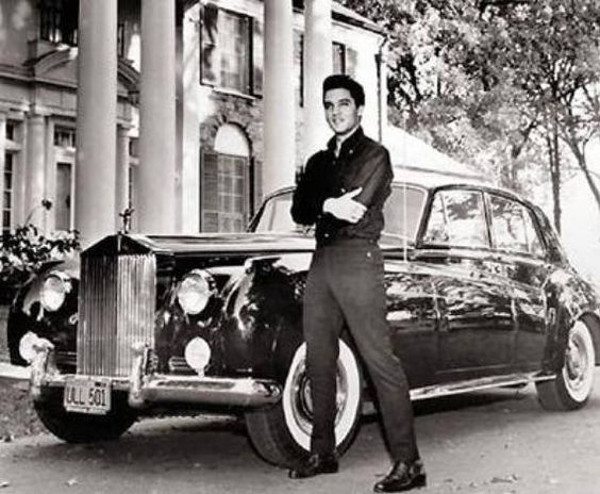
This photo of Elvis with his 1964 Rolls Royce Phantom is all over the place—and it’s a fake. When I found the photo, I noticed that while the entire image is sharply in focus, Presley’s head is not. Then I noticed that while the car casts a midday shadow on the ground beneath it, Elvis does not.
Elvis donated his 1964 Rolls Royce to be auctioned off for a Hollywood charity for mentally retarded children. This was typical of Presley—a notoriously generous giver to charities—and atypical of wealthy people, notoriously ungenerous period.
The car was valued at $35,000 at the time: according to the conservative Consumer Price Indicator, it would be worth $270,000 today. Using the more realistic Hershey Bar Index, that $35,000 would translate into $650,000 in 2016 dollars! 7
Either way, it was a helluva donation, and it caught a lot of people’s attention.
Elvis recorded the theme song to his next movie, Charro. The song was arranged by Hugo Montenegro, who had just had a big hit with his arrangement of Ennio Morricone’s theme song to the quintessential spaghetti western, The Good, The Bad And The Ugly from 1966.
This received attention because photos of the unshaven Presley, looking like he was bucking for Clint Eastwood’s role in those spaghetti westerns, were being circulated as advanced promotion for the movie.
August
In August, filming continued at Apache Junction, Arizona, for Charro. Photos of the unshaven Elvis found their way into the trade publications. Believe it or not, fans were so starved for a “new” non-Spinout/Clambake Elvis that we thought this was groovy!
Meanwhile, Colonel Parker sees a rough cut of the television special and is incensed that there’s not a single Christmas song in the show! Fortunately, Elvis and the guys cut a relaxed version of Blue Christmas in the sit-down sessions on June 27 (“I’d like to do my favorite Christmas song of all the ones I’ve recorded”). It is included in the final cut, and Colonel is assuaged.
September
Almost In Love / A Little Less Conversation
Billboard: #95 / #63
Cash Box: #63 / #53
Single: Both sides of this, the fifth single of the year, were from the movie Live A Little, Love A Little, a title that apparently was meant to sound hip but probably ensured that people stayed away from theaters at the time it was playing. It’s hard to believe that Elvis, the Colonel, and RCA thought to promote the nice I mushy ballad as the A-side.
Reviews: Billboard reviewed Almost In Love and called it “a smooth ballad [that] should hit hard.”
Sales: According to Jørgensen, this single sells “just over 100,000 copies.”
According to Hendrickx, A Little Less Conversation eventually sold 350,000 in the US and passed 500,000 globally.
Personal experience: I didn’t like these two tracks as a single but bought the record nonetheless.
October
Live A Little, Love A Little
Movie: This movie was based on the novel Kiss My Firm But Pliant Lips by Dan Greenburg.
Reviews: Variety said the movie was one of Presley’s “dimmest vehicles.” The Motion Picture Herald said, “Audiences may grow a little weary of psychological studies of frigidity.” (!)
Due to a poor performance in the US, the film was not released at all in many regions, including the UK.
Personal experience: Again, I did not pay to see this movie in a theater but saw it as part of a double-feature at a drive-in.
Singer Presents Elvis Singing Flaming Star And Others
Album: As part of the deal to get the Singer Sewing Company to sponsor the Elvis Presley television special, the company received this unique album to sell exclusively in Singer Sewing Centers throughout the US.
Reviews: As this album was only available at Singer Sewing Centers and not released to the general marketplace, I do not think that it was reviewed in the trades at the time.
Sales: I don’t know if anyone has ever found any sales records from Singer regarding this album, so your guess is as good as mine.
Commentary: The album contained ten tracks: Flaming Star had been a Top 20 hit on Billboard in 1961 as the featured track on an EP. Seven other tracks were mostly forgettable affairs from several mostly forgettable movies.
But there were two big attractions to the record: Elvis’s version of Chuck Berry’s Too Much Monkey Business rocked and actually made reference to Viet Nam! It would have made a much stronger single than Let Yourself Go and Almost In Love.
The record ended with a fierce version of Tiger Man, the first recording from the upcoming television special to be released.
After the deal with Singer ended in early 1969, RCA Victor reissued this album as Elvis Sings Flaming Star on their Camden budget line. That record sold at least 500,000 copies. It was reissued again on the Pickwick imprint and sold at least another 500,000 in the wake of Presley’s death in 1977.
Personal experience: I bought this album at the Singer Sewing Center the day that it came out. The NBC-TV special was already getting attention in the media and I was psyched! I also picked up all the little free goodies that RCA Victor was circulating there (booklet, tickets, etc.). I was able to forgive some of the soundtrack dross on the record because of Tiger Man, an outtake from the upcoming special.
Elvis was inducted into Playboy’s Music Hall of Fame, the closest thing to such an honor that existed at the time. Of course, he went in after Frank Sinatra. And the Beatles. And Herb Alpert. On the bright side, he beat out such Playboy readers’ faves as Three Dog Night, Blood Sweat & Tears, and Chicago.
I could write at length about the build-up and the anticipation we fans underwent in October and November over this show. While it may seem difficult to believe in hindsight—and given Presley’s preternatural presence and performance on the show—many of us were afraid that he would blow it.
He didn’t and nothing was the same ever again.
November
If I Can Dream / Edge Of Reality
Billboard: #12 / #__
Cash Box: # 9 / #__
Single: The A-side heralded the upcoming television special; the B-side the upcoming movie. First printings of the picture sleeve from November read “If I Can Dream As Featured On His NBC-TV Special.” Second printings from December replaced that blurb with a piece of filigree-like artwork.
Reviews: Billboard said that If I Can Dream was “one of his strongest commercial entries in a while.”
Sales: According to Jørgensen, initial sales reach “something like 800,000” copies.
According to Hendrickx, If I Can Dream eventually sold 1,250,000 in the US. It also sold 150,000 in the UK and is just under 2,000,000 globally.
Personal experience: I bought this upon release. I thought it one of the best records Elvis had ever recorded. My opinion hasn’t changed.
Elvis (aka Elvis NBC-TV Special)
Billboard: #8
Album: This featured recordings done for the NBC-TV special at NBC’s studio and soundstage in Burbank, California, in June 1968. At the time, it was the longest LP that Elvis had released.
Reviews: I could not find a review of this album in any of the trade publications of the time.
Sales: According to Jørgensen, this album “sells more than 500,000 in its initial chart run.” Sales of approximately 600,000 copies qualified the album for an RIAA Gold Record Award in 1969.
According to Hendrickx, ELVIS eventually sold 1,750,000 in the US. It also sold 250,000 in the UK and passed 3,000,000 globally.
Personal experience: I ran to the record store after school to buy this album. I ran home from the record store to play this album. It was probably the most intense emotional response I had ever had to a new Elvis album in my life. Of course, given the albums of the previous few years, there hadn’t been much competition.
December
Elvis (Singer Presents Elvis)
Television: The Singer sponsored special is broadcast on December 3. It beat out Rowan & Martin’s Laugh-In for the top spot as the most-watched show that week.
Reviews: Most reviews were glowing. Believe it or not, the show was greeted with less than enthusiastic responses from some sources. Variety stated, “He still can’t sing!” What in Grommett’s Wholly Name were they sniffing during the show?
The idiot, ahem, the critic for The Los Angeles Times actually wrote, “I don’t think many viewers care to see singers sweat on TV.”
Personal experience: I still remember sitting on the floor in front of the television set in the living room of my parents’ house on the evening of December 3, 1968. My brother and sister were intentionally running and horsing around to annoy me because I loved Elvis. This was the greatest television experience of my life, matched only by the moon landing in 1969.
Commentary: Colonel Parker signs Elvis to a contract to open the showroom of the new International Hotel in Las Vegas, Nevada, in July 1969. Presley will receive $100,000 a week, which will turn out to be one of the best deals in the history of Las Vegas.
In fact, let’s call it a steal for Vegas!
Despite the staggeringly unprecedented income that Presley’s stay will bring the International every other hotel and restaurant, and bar in Vegas, the crafty Colonel will continue to command staggeringly less than his boy’s worth for years to come.
In England, the New Musical Express magazine once again named Elvis Presley the “Outstanding Male Singer of the Year.”
This is what the newly constructed International Hotel would like eight months after Colonel Parker signed Elvis to open the showroom in July 1969.
Thoughts of an Elvis fan in 1968
For those of us who sat there on December 3, 1968, glued to our tv sets, and watched the resurrection of a star and the creation of a legend, we thought we’d never have to live through anything like the first 337 days of 1968 again.
Hah!
The release of a series of lame singles (Rags To Riches and Life and It’s Only Love and Until It’s Time For You To Go and An American Trilogy) and anemic albums (LOVE LETTERS FROM ELVIS and ELVIS NOW and MADISON SQUARE GARDEN and RAISED ON ROCK and HAVING FUN ON STAGE) accompanied by embarrassing performances and no-shows in Vegas and on the road and all that was all only 800 days away but that’s another story!
FEATURED IMAGE: Location filming for Charro began on July 22, 1968, and was completed in the first week of September. The movie didn’t open in theaters until March 1969, but images of the new ‘new’ Elvis popped up in trade publications.
The ‘new’ Elvis was the leaner Elvis with the sculpted sideburns that made the Star Trek crew look timid. The new ‘new’ Elvis was the unshaven dude in the poster above. Fortunately, the movie tanked and we got only the ‘new’ Elvis from that point on.
POSTSCRIPTUALLY, these books were referred to or used for this article. Each is excellent; each is recommended.
Quotes regarding record reviews and movie reviews are from All Shook Up – Elvis: Day-By-Day, 1954-1977, by Lee Cotten (top image). Sales figures and quotes regarding those sales are by Ernst Jorgensen from Elvis – Day By Day: The Definitive Record Of His Life An Music, by Peter Guralnick and Jørgensen (middle image). Marc Hendricks apparently had access to RCA’s vaults in New York and came up with different numbers, along with approximate sales for the UK and accumulated worldwide sales. These were published in Elvis A. Presley – Muziek, Mens, Mythe (“Music, Man, Myth” and bottom image). There have been several editions since 1993, this one is from QM Publishing (1998)
FOOTNOTES:
1 In a previous article (“I was going to subscribe to your site, but if you mention drugs once”) I wrote this caption to a poster from Live A Little Love A Little: “Being an Elvis fan in 1968-1969 was confusing and rewarding experience—especially if you were one of the few still buying tickets for each new movie. Presley’s last six attempts at reviving a career in Hollywood all failed, but were a hoot to watch.” This motivated me to write this article that you are reading right now.
2 By 1968, the feeling of guilt had become one with the feeling of stupidity.
3 How Can You Lose What You Never Had and The Girl I Never Loved were two of the best soundtrack songs in recent memory and they were dropped from the movie! Go figure.
4 The discrepancies between Jørgensen and Hendrycks’s sales figures—whether small or huge—can be explained: the former’s may be based on initial sales or incomplete figures, while the latter may take in the whole picture over a longer period of time. (Or not.)
5 Here’s the way it more or less worked in the ’60s for established artists: new single released to radio stations, who play record. Airplay produces demand. Single released and the artist’s diehard fans all buy it within days of release and it shoots up charts. Sales increase airplay, which increases demand which produces more sales which moves a record further up charts which increases airplay . . .
Similarly, a new Beatles Dylan Elvis album was released and several hundred thousand fans bought it immediately! RCA might have lost a few hundred thousand sales for Guitar Man by releasing it eight weeks earlier on the CLAMBAKE album. Decreased sales meant less airplay which meant less demand etc. We’ll never really know . . .
6 Actor Burgess Meredith was directing Chayefsky’s play The Latent Heterosexual in 1968 and was coming up short in backing.
7 I used local Seattle prices, which is $1.49 for a 1.55 ounce Hershey bar in 2016. As prices tend to be on the high side here, the $655,000 value for the Rolls may be a wee bit less in other parts of the country.
Mystically liberal Virgo enjoys long walks alone in the city at night in the rain with an umbrella and a flask of 10-year-old Laphroaig who strives to live by the maxim, “It ain’t what you know that gets you into trouble; it’s what you know that just ain’t so.
I’ve been a puppet, a pauper, a pirate, a poet, a pawn, and a college dropout (twice!). Occupationally, I have been a bartender, jewelry engraver, bouncer, landscape artist, and FEMA crew chief following the Great Flood of ’72 (and that was a job that I should never, ever have left).
I am also the final author of the original O’Sullivan Woodside price guides for record collectors and the original author of the Goldmine price guides for record collectors. As such, I was often referred to as the Price Guide Guru, and—as everyone should know—it behooves one to heed the words of a guru. (Unless, of course, you’re the Beatles.)

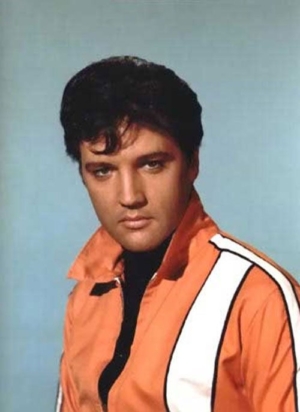

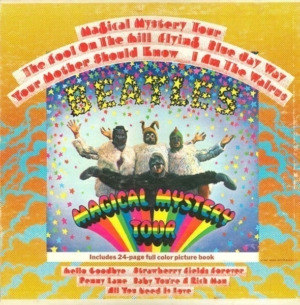
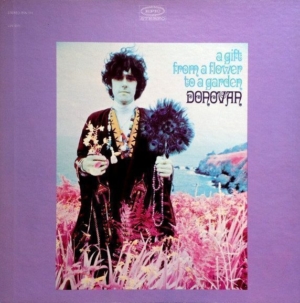
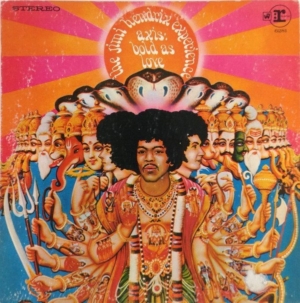
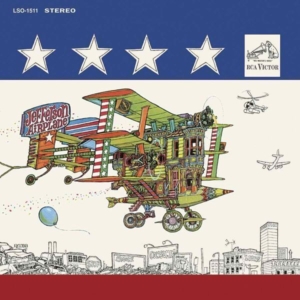
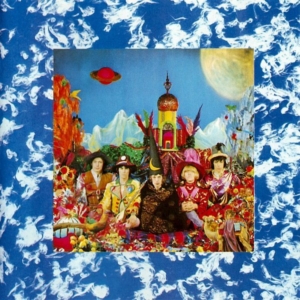
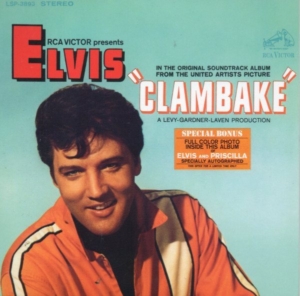
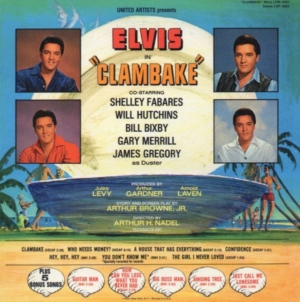


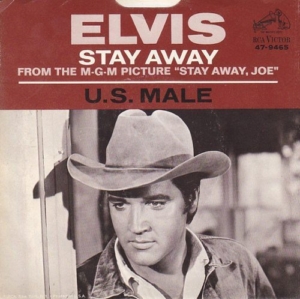
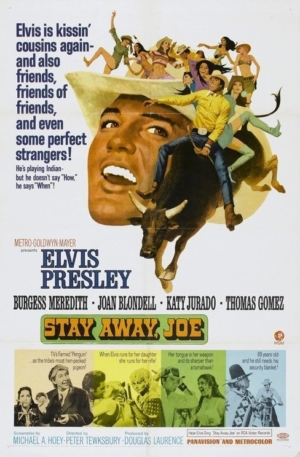
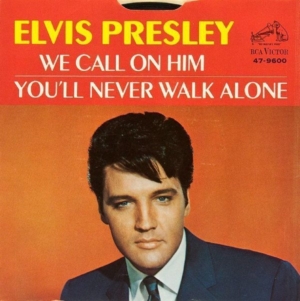

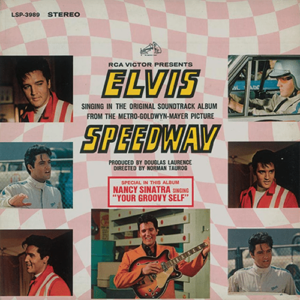
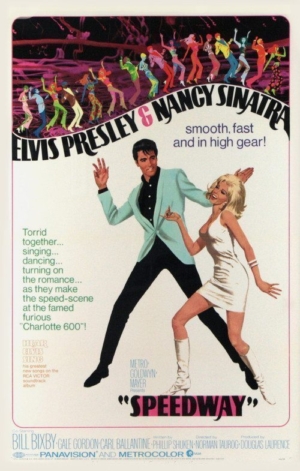
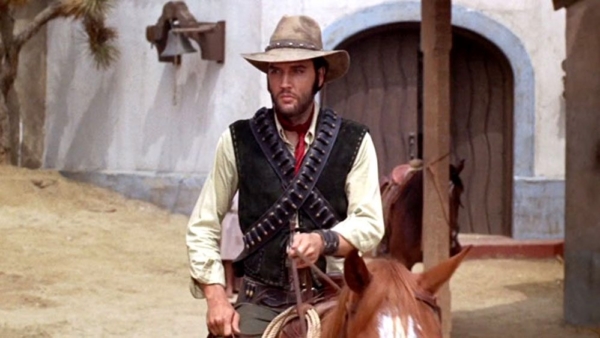


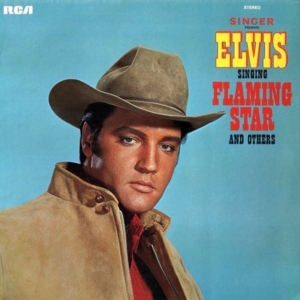
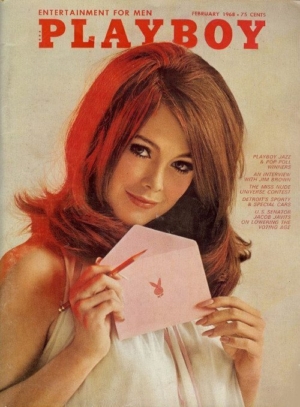
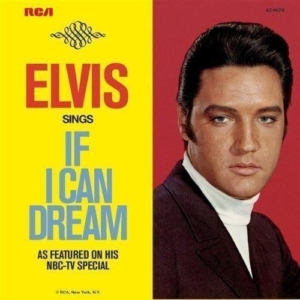
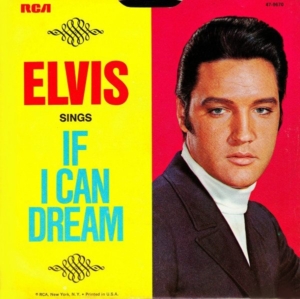


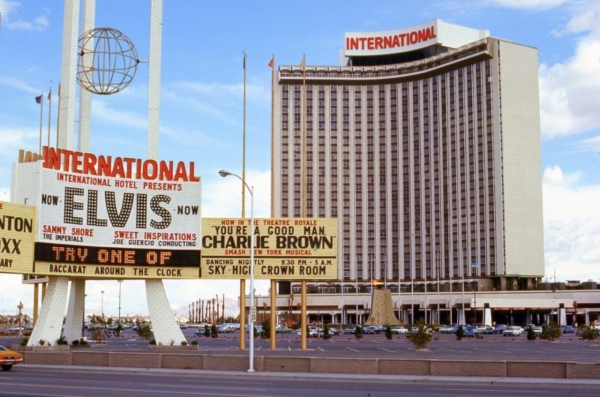
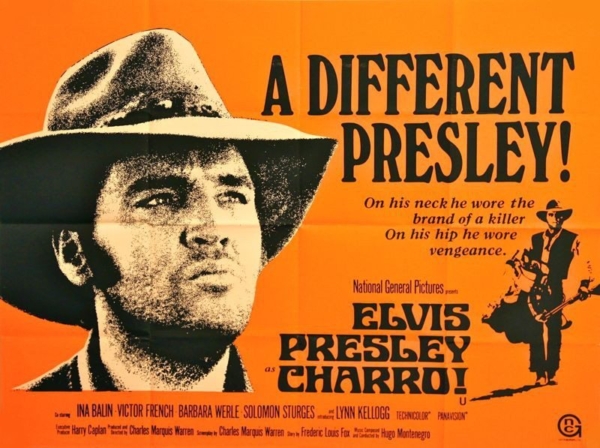


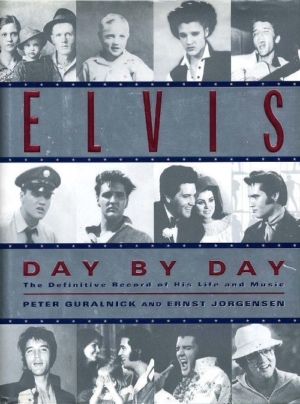




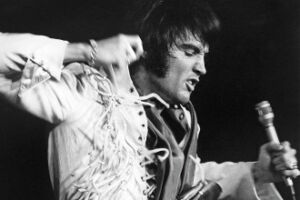

Your article is spot-on! In June 1968, we did hear some DJs mentioning a Christmas Special was in the works and RCA would be releasing another Elvis Christmas album. Thank goodness they were only half-right!
I don’t remember a lot of advance information “leaking” out about the special back then. Part of the reason is that there simply wasn’t a way to get that info then and part of the reason is probably that there wasn’t a whole lot of excitement about an “all Elvis” television special at the time. Hell’s Belles, during the week of the special’s broadcast, TV Guide gave the cover to Ann-Margret’s television special instead of to Elvis!
Don’t know if any recording exists of the June Press Conference.
It was quiet over the airwaves about the Singer Special but might have been for fans not to know Elvis’ whereabouts.
When did you first know that this wasn’t going to be another Christmas Perry Como-type special?
For me, it wouldn’t be until November when passing a Singer Store and seeing the banners hanging up and the Singer Presents Elvis Singing Flaming Star and Others (LP) at the counter listing “Tiger Man” with two asterisks: “Recorded live (monaural) at the NBC Television Studios Burbank, California.”
When I heard “If I Can Dream” over the airwaves, there was no doubt this was going to be something special.
Everyone involved with the special played their cards close to the vest. I have it in my admittedly faulty memory banks that I first saw the opening salvo of promotion (the banners, the album, the giveaways, etc.) at the local Singer Store in October.
There was a TV Guide-like publication back then that listed the contents of the three television stations for the upcoming week. I don’t remember its name and it may have been regional and servicing the East Coast. Unlike TV Guide, it featured the Elvis special on the front cover with an article inside that was several pages long. These were the first photos that I saw of Elvis in his leather suit. It also mentioned some of the songs he would be singing. When it listed two of my all-time faves, “Trouble” and “One Night,” I knew things weren’t going to be Como-ish!
RCA held “If I Can Dream” back until the last weeks of November. The first time I heard it, chills went down my 17-year-old spine.
Here is the review in the November 23, 1968, issue of Billboard. The editors did not pick it for their Top 20 Pop Spotlight but relegated it to their Top 60 Pop Spotlight:
https://books.google.com/books?id=vQoEAAAAMBAJ&pg=PA83&dq=elvis+if+i+can+dream+billboard+1968&hl=en&sa=X&ved=2ahUKEwijtbzAzOT5AhUzGTQIHfPoAYo4ChDoAXoECAUQAg#v=onepage&q=elvis%20if%20i%20can%20dream%20billboard%201968&f=false